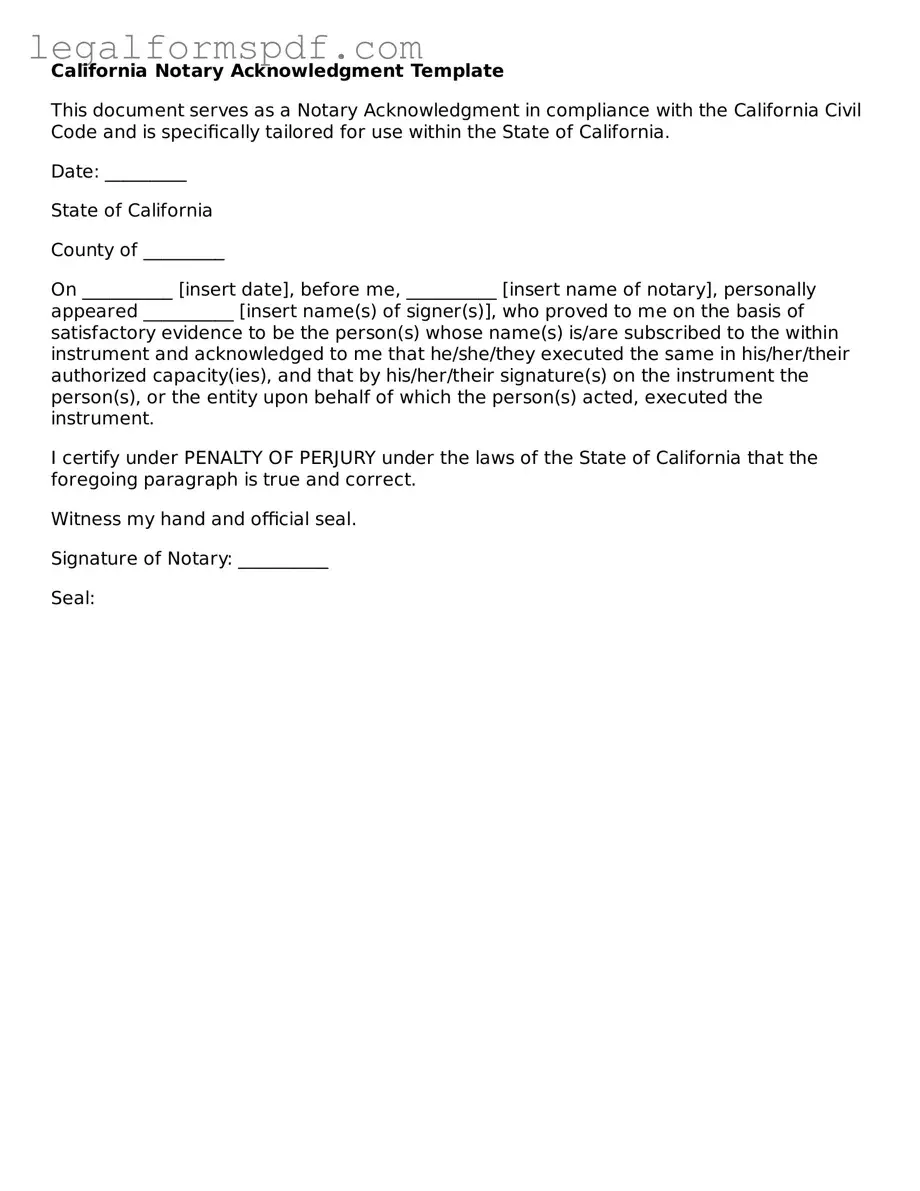What is a California Notary Acknowledgment form?
A California Notary Acknowledgment form is a document used by a notary public to confirm a signer's identity, acknowledge that the signature was willingly made, and that the signer understands the contents of the document. It does not validate the truthfulness, accuracy, or validity of the document itself but merely the acknowledgment of the signature.
Why is a Notary Acknowledgment required in California?
In California, a Notary Acknowledgment is often required to legally validate the execution of important documents, such as deeds, trusts, and powers of attorney. This process ensures that the document is recognized as legally binding and may prevent fraud and identity theft. It adds a layer of protection for all parties involved.
Who can perform a Notary Acknowledgment in California?
Only individuals who have been commissioned as notaries public by the State of California are authorized to perform a Notary Acknowledgment. They must comply with California's laws and regulations regarding notarial acts to ensure the process's integrity and legality.
What are the key components of a Notary Acknowledgment?
A Notary Acknowledgment typically contains the date of the acknowledgment, the location (state and county) where the acknowledgment took place, the name of the person whose signature is being acknowledged, and a statement indicating that the person has acknowledged that they signed the document willingly. Additionally, it includes the notary public's signature, seal, and commission expiration date.
Can a Notary Acknowledgment be completed for a document signed by someone unable to be present with the notary?
Generally, the signer must be physically present before the notary public for the acknowledgment to be performed. This presence allows the notary to verify the signer's identity effectively and ensure the document is signed under the signer's free will. However, remote notarization may be permitted under certain conditions and with specific technology, as per the latest state regulations.
What identification is needed for a Notary Acknowledgment in California?
Valid identification is crucial for a Notary Acknowledgment. This could include a driver's license, passport, or other government-issued identification that features the signer's photograph, signature, and physical description. The notary public must verify the identity of the person signing the document to proceed with the acknowledgment.
What happens if a mistake is made during the Notary Acknowledgment process?
If a mistake is made during the Notary Acknowledgment process, it's essential to address it immediately. The notary public may need to correct the error on the acknowledgment form or attach a corrected acknowledgment form to the document. In some cases, a new acknowledgment may need to be completed. It's crucial that the information on the acknowledgment accurately reflects the notarization process.
How long does a Notary Acknowledgment last in California?
The act of notarization itself does not expire; however, the document's legal significance and the acknowledgment's relevance depend on the document type and the context in which it is used. It's important to understand the requirements of the specific entity or jurisdiction requesting the notarized document.
Can a California Notary Acknowledge a document that will be used outside of California?
Yes, a California Notary can acknowledge a document that will be used outside of California, as long as the notarial act takes place within the state's geographical bounds. The notary public must follow California's laws during the notarization process, and the document must be acknowledged according to California standards.
